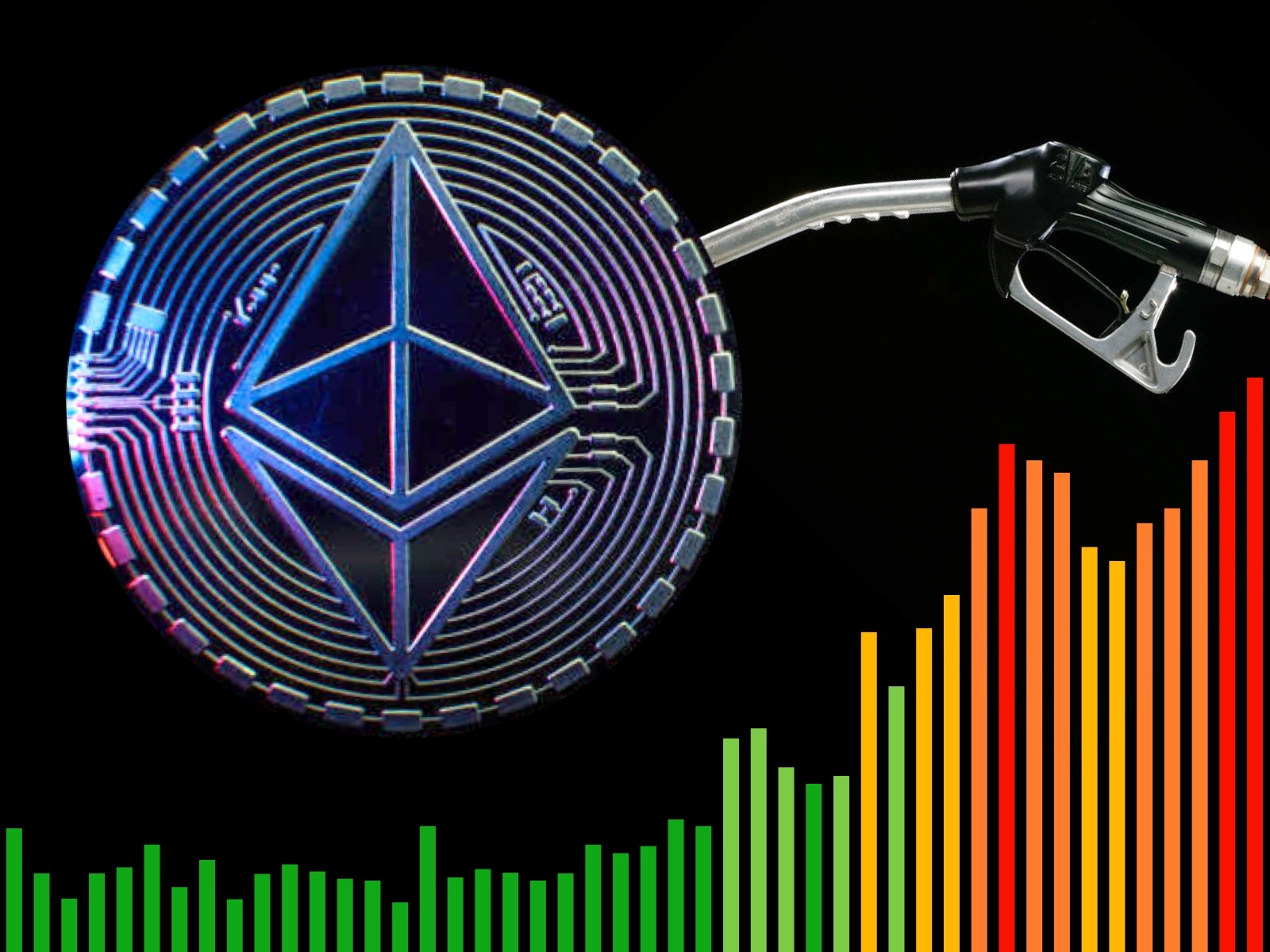 When making any transaction on the Ethereum network, the user is charged a commission, which goes to pay remuneration to Ethereum miners for finding blocks. The unit of such commission in the Ethereum network is Gas. At the moment of a sharp increase in the number of transactions in the Ethereum network, the price of gas rises accordingly, which makes the cost of transactions (deposit and withdrawal, transfer to another wallet, interaction with smart contracts) in the network much higher. The ability to timely monitor the current gas price in the Ethereum network, as well as analyze the days and times of the day with the lowest gas prices, will help you significantly reduce commission costs when working with Ethereum.
When making any transaction on the Ethereum network, the user is charged a commission, which goes to pay remuneration to Ethereum miners for finding blocks. The unit of such commission in the Ethereum network is Gas. At the moment of a sharp increase in the number of transactions in the Ethereum network, the price of gas rises accordingly, which makes the cost of transactions (deposit and withdrawal, transfer to another wallet, interaction with smart contracts) in the network much higher. The ability to timely monitor the current gas price in the Ethereum network, as well as analyze the days and times of the day with the lowest gas prices, will help you significantly reduce commission costs when working with Ethereum.
At the moment, Ethereum is the most popular platform for deploying smart contracts for DEX (Decentralized Exchanges), DeFi (Decentralized Finance), NFT (Non-Fungible Tokens) and other similar projects. In addition, for 2022, Ethereum ranks 2nd (right after Bitcoin) among all cryptocurrencies by market capitalization. The Ethereum network blockchain processes transactions and executes smart contracts. All actions in the Ethereum network are confirmed by nodes controlled by miners. Confirmation of transactions requires high computing power and high energy consumption, and therefore, miners charge transaction fees for their services.
To pay fees on the Ethereum network, the so-called Gas is used, which is usually measured in Gwei (= 1000,000,000 wei). The commission is charged for any transaction in the ether network: transfer and transfer of tokens and coins in the ether network, calling various methods of smart contracts. Since the Ethereum network has limited performance, it is Gas and its price that acts as a limiter on the number of transactions, preventing network overload. The more complex the contract method needs to be executed, the more expensive the transaction will cost.
The commission is paid in Ether (Ethereum). The cost of gas in the Ethereum network is indicated in Gwei - where 1 Gwei = 0.000000001 (1 billionth of an ETH coin). In order to keep abreast of the current gas price in the ether network, there are special services, such as EthGasPrice.org. The service shows how much it will cost to process a transaction on the Ethereum network at the moment and how long it will take.
Base values show the cost of transferring an Ethereum coin from one wallet to another.

The cost of other actions in the network will differ depending on the smart contract with which you are going to interact and on the complexity of executing a certain method of a certain contract. Typically, the complexity of contract methods is determined by the value of the Gas used parameter. To find out the cost of a transaction for popular DEX and DEFI services, you can look at the table below, which will indicate the commission values for various actions for popular decentralized services on the Ethereum network. (For example, transferring the USDT token on the Ethereum network, using popular SWAP services or decentralized exchangers, buying NFT on the OpenSea NFT exchange, and so on...).
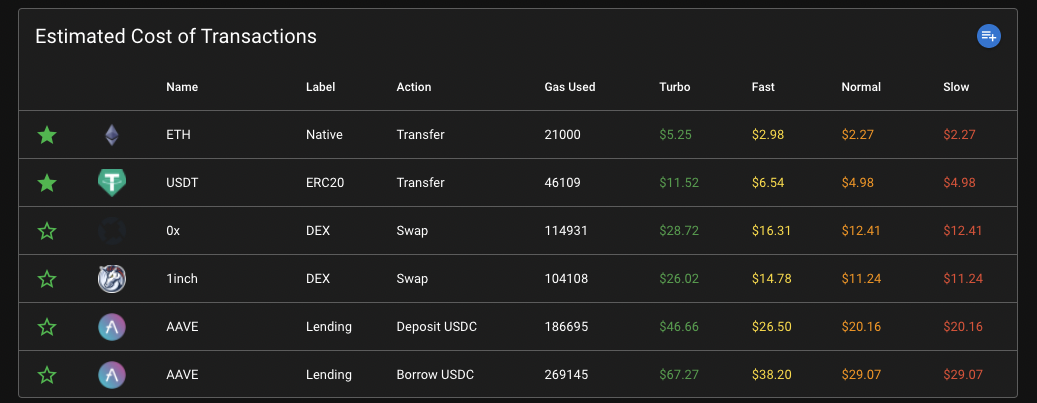
If the service or action you need is not in the list, you can add your own (if you know the Gas used value for this action). This can be done by clicking on the blue icon in the upper right corner of the table, and then specifying the name of the service and action and entering the Gas used value. For a normal transfer of ETH in the network, the Gas used value is 21,000, and for some actions in complex DEX and DEFI projects, it can be many times and even tens of times more. For example, to add liquidity in Uniswap v3, this value is 445784. The Ether fee for a transaction can be easily calculated independently using the formula Gas used * current Gas price in Gwei * 0.000000001 ETH. For example, if the gas price is 50 Gwei, the cost of transferring 1 ETH in the Ethereum network will be 21000 * 50 * 0.000000001 = 0.00105 ETH. However, using specialized services is much more convenient.
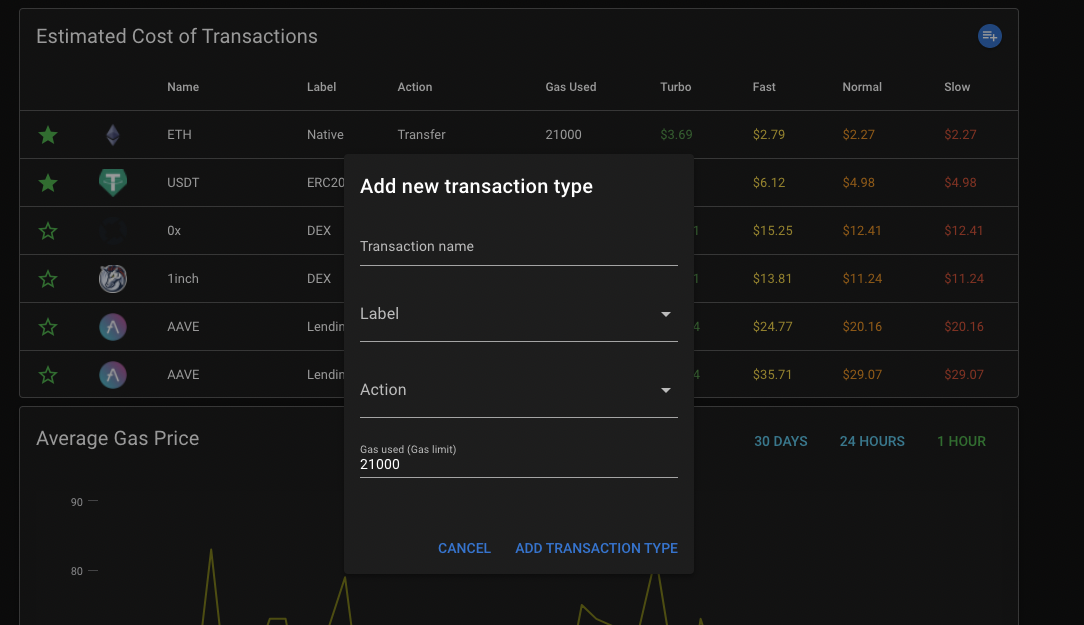
As for the analysis of gas prices in the Ethereum network over time, the service offers historical data on the minimum, average and maximum price values for the past hour, day and month. Also, you can use the so-called HeatMap chart (or heat map) to determine the time and day of the week with the lowest average hourly gas prices. Thus, you can significantly save on the cost of transactions by choosing the right time and days of the week to complete them.
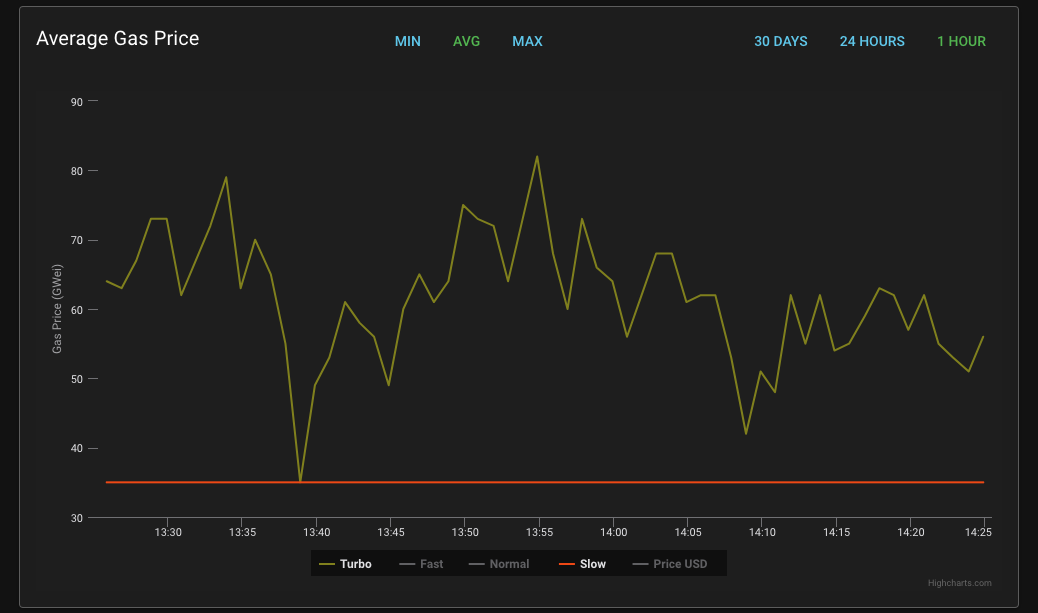

In addition, EthGasPrice.org is also an aggregator of other similar services, and in the table at the bottom of the page, you can compare gas price indicators with values from other gas price trackers on the Ethereum network.
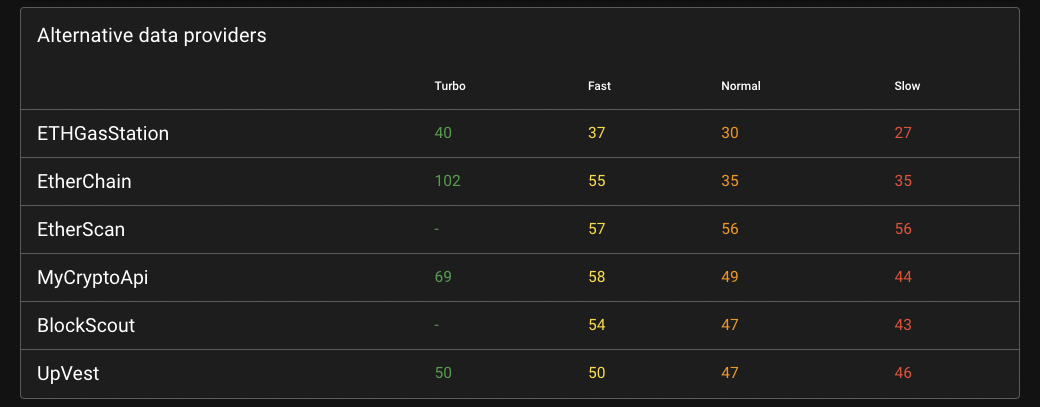
Also, the EthGasPrice service offers you to install an extension for the Google Chrome browser, which displays real-time data on the price of gas and the approximate time of the transaction. This method turns out to be quite convenient in order to always be aware of the current gas price.
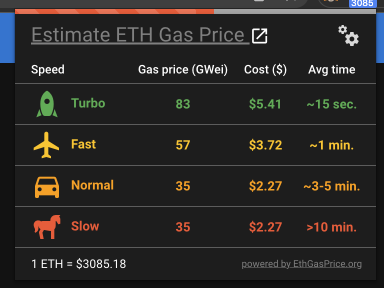
As a result, EthGasPrice is an excellent free service that will be useful to everyone who often deals with Ethereum and decentralized services based on it, and which will allow you to save a lot on transaction fees. And if the last few months the gas price in the Ethereum network has been more or less stable and the maximum price drops are only 2-3 times, then a year ago the gas price could fluctuate dozens of times during the week, and the right choice of time for conducting expensive transactions was very important.









